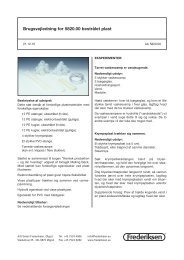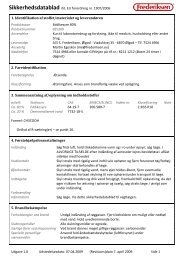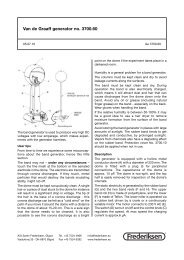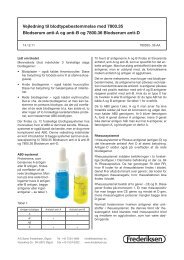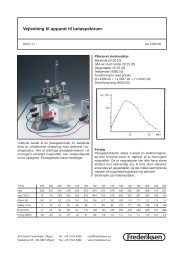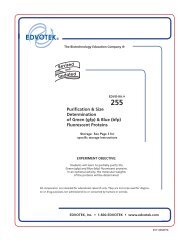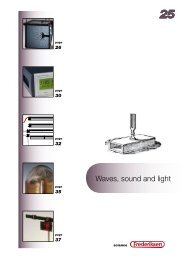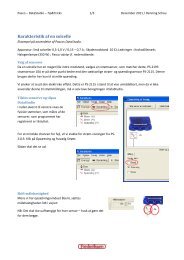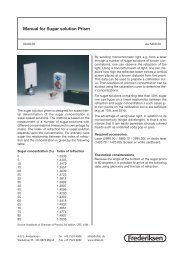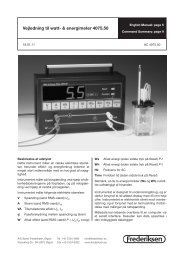218100 - Frederiksen
218100 - Frederiksen
218100 - Frederiksen
Create successful ePaper yourself
Turn your PDF publications into a flip-book with our unique Google optimized e-Paper software.
Physical pendulum – experiment procedureWhen working with the general physical pendulum,neither washers nor the extra set of bolts are needed.There are enough variations even so!Experiments 1, 2 and 3 below may be carried outindependently of each other.Fix the metal discs with the bolts - it is enough totighten them with your fingers.The knife edge pivot can for simple demonstrationexperiments be used with a retort stand rod and anA foot or a table clamp. More accurate results areachieved by clamping the knife edge pivot to theedge of a steady table with a cramp. Preferably justabove a table leg. If possible, use a table that is securedto a wall.Note: There is a position difference when a hole isused for a pivot (upper edge) or as the location fora weight (centre). Be careful to use the right values.The amplitude of the oscillations should be small.About a centimetre is fine.Calculations – Moment of inertia of the rodThe formula for the period can be rewritten asfollowsSince the centre of gravity is located in the centre ofthe rod, everything on the left-hand side is known.The total mass M is equal to the mass m Rof the rod.For the rod without weights the right-hand side canbe rewritten using Steiner’s theorem:It follows that if the values of are plotted asa function of a 2 , the results should lie on a straightline with the rod mass m Ras slope and moment ofinertia of the rod about its centre I Ras the intersectionwith the y-axis.1 – Moment of inertia of the rodMeasure the period as an average over at least 20cycles for each of the 6 possible pivots (centre holeincluded).Measure the distance from the centre of the rod toeach of the five pivots precisely. The centre is markedwith a thin line – it may be an idea to temporarilyextend the line across the centre hole using the edgeof a strip of adhesive tape. (These distances are alsoused in the following experiments.)For comparison, calculate the moment of inertia ofthe rod about its centre by dividing it into two semicircularends and a rectangular piece in the centre– see also ”Inertia Moments”. Ignoring the squareholes only results in a relatively small error.To determine the mass of the three parts, distributethe total mass of the rod proportional to the areas ofthe three parts.2 – Symmetrical mass distributionSelect a position of the weights – e.g. the next outermosthole. The locations must be symmetrical, sothe pendulum still has the centre of mass in the centreof the rod.In order to avoid that the pendulum ”capsizes”,when using the centre hole as pivot, the bolts can bepointing in opposite directions.Measure the period as an average over at least 20cycles for each of the 5 possible pivots (centre holeincluded).If you have not already determined these: Measurethe distance from the centre of the rod to each of thefive pivots precisely. The centre is marked with a thinline – it may be an idea to temporarily extend the lineacross the centre hole using the edge of a strip ofadhesive tape. (These distances are also used in thefollowing experiment.)Repeat eventually the measurement series with theweights in a new – but still symmetrical – position.®



